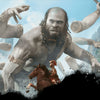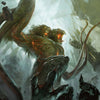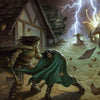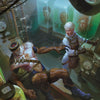Make Death Matter Again in D&D 5e
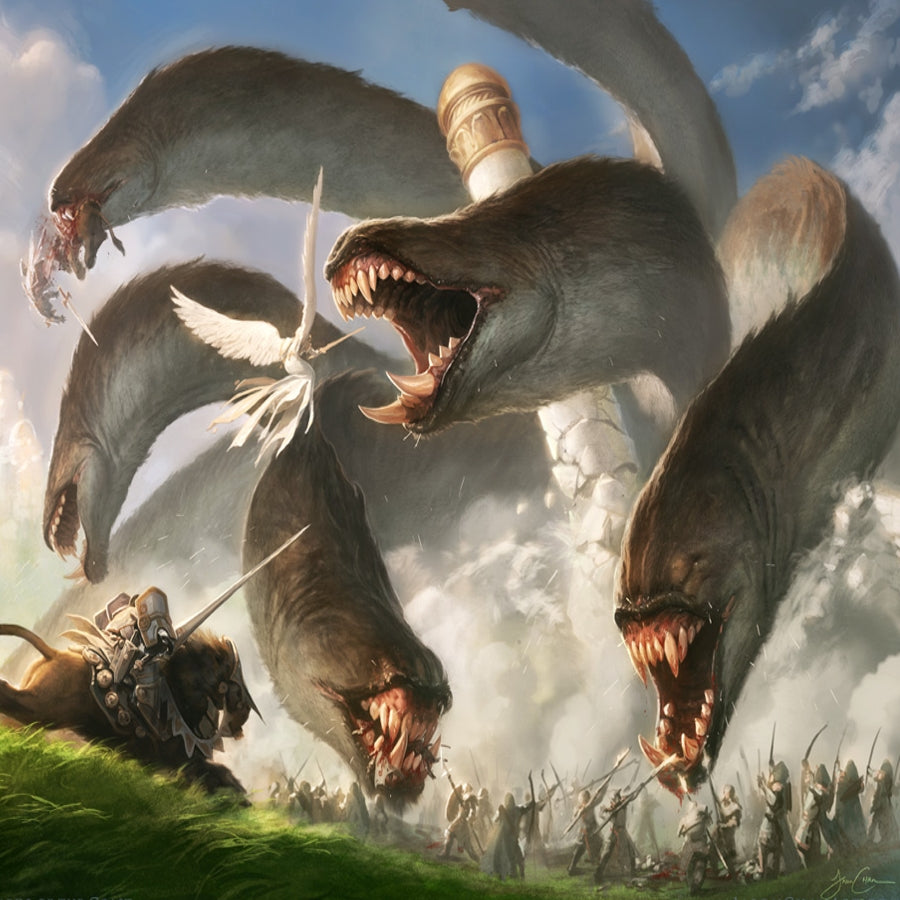
Written by Luke Hart
Today, we’ll be discussing something in D&D 5th edition that has always been deeply unsatisfying to me: the fact that when a PC drops to zero hit points—taken catastrophic injuries and is nearly dead—then receives a minuscule amount of healing, they are back on their feet and at full fighting strength with zero repercussions from having almost died.
Now, I think I know why the game is designed this way. It caters to a more casual crowd and makes the game easier for players—and that’s perfectly fine for folks who want to play the game that way, but I like there to be some consequences when a PC drops to 0 hit points and nearly dies.
So, today, I’ll go over 14 ways to make dropping to 0 hit points have some teeth instead of just being a non-event.
By the way, running awesome 5e games with in-depth lore, deadly traps, and terrifying monsters doesn’t have to take hours of prep! Lairs & Legends 2 and Loot & Lore 2 have everything you need! Hand-crafted by a team of professional game masters to make it as easy to use as possible, it’s an anthology of game master resources to fuel you for years to come.
Never again feel like you’re stuck with the chore of prep so you can finally run your game: pick up Lairs & Legends 2 today.
Watch or listen to this article by clicking the video below.
1. Go Prone and Drop Your Items
This is what should actually happen every time somebody drops to zero hit points. You drop prone when you go unconscious, and whatever is in your hands, except maybe your shield, falls to the ground. Then, you have to use half of your movement to stand back up, and you’ll need to pick your items back up. There’s also a chance that your enemy might have scooped up your items, such as your weapon or spellcasting focus. This method is simple and requires no changes to the game because this is what should normally happen anyway.
2. Gain One Level of Exhaustion
This is a super popular option among many groups. It’s easy to implement and track and doesn’t involve complicated homebrewing. That said, exhaustion is a big penalty, though, especially after the first level of exhaustion, so I feel like this is an option for a far grittier game. It can easily lead to a death spiral once you start getting two or three levels of exhaustion, so be careful. Remember: Exhaustion is only removed after a long rest, after which you only get back one level of exhaustion. So, once you start dropping to zero hit points multiple times, it’s going to be hard to get back to full fighting strength. You’re definitely going to be looking at a death spiral for some of these frontline melee types who might go down several times in one combat, so implement with caution.
If I implemented this in my games, my players would be in a load of trouble because I tend to run challenging games where players drop to zero quite a bit.
3. Lingering Injuries
This is what I currently do when my players drop to 0 hp. The Dungeon Master’s Guide has lingering injuries, but I think they’re really extreme, so I homebrewed my own to use. The idea is that when you drop to zero hit points, you gain a lingering injury. You then roll on a table to determine what that injury is and its consequences. Of course, there are then rules around how to remove that lingering injury.
For instance, if you roll a 6 on the table, you get an arm injury. If you roll really badly and get a 1, you twist your back, and you have disadvantage on your attack rolls.
One of the columns shows how long the lingering injury lasts and what you must do to get rid of it. It’s a pretty simple table, just one through 12. All of these lingering injuries are designed to just impede you throughout the course of the current combat; once the combat is over, you can usually get rid of the lingering injury and continue adventuring. It provides some consequences, but they’re not so extreme that you will want to pack your bags and go home.
If you’re interested in picking up my lingering injury rules, they are available here in The DM Lair store.
4. Madness from the Dungeon Master Guide
When a player drops to zero hit points, the PC gains an effect from the short-term madness, long-term madness, or indefinite madness tables in the Dungeon Master Guide on pages 259 through 260. Those effects last for the durations listed. Some of the effects, particularly the short-term madness, are very severe, so use your judgment when implementing these rules.
5. Death Saving Throw Failures Do Not Reset When You’re Healed
I love this rule. I don’t use it personally, but I think it’s great. The way this works is that your death saving throw failures only reset when you take a short or long rest. That means that over the course of that adventure, the more times you drop to zero hit points and fail your death saving throw, the closer you are to dying. So, if you dropped to zero in one encounter and won that saving throw failure, but you get back up, then in the next encounter, you drop to zero hit points again and have a second death saving throw failure, you are now one failure away from dying. Those failures did not reset when you were healed from your first encounter after dropping to zero.
This is a very simple mechanic, there are no real home brew rules needed, and it really ups the ante and makes death saving throws and dropping to zero hit points a big deal.
6. Use Negative Hit Points
Yeah, we’re going to pull this right back from previous additions and throw it into 5th edition. For example, let’s say you got hit for 10 damage when you were only at 5 hit points; now, you’re at -5 hit points, and you need at least 6 points of healing if you want to get back into the positive at 1. You also need at least a minimum of 5 points of healing to put you at zero and simply stabilize you. So, gone would be the days when healing word would be the solution to everything.
This also translates relatively well to higher levels where you’ll be taking bigger hits and need stronger healing to not succumb to your wounds. Healing word and healing potions might not bring you back when you drop the negative hit points, and the group will need to spend more resources to get someone back up. This encourages people to use preemptive healing instead of just letting people drop to zero hit points before using healing word or going over and healing them. We all know that in a fight in 5th edition, as it currently is, you’re almost always better off just letting someone drop to zero before you heal them. There’s no point in trying to preemptively heal them right now, really, as the game exists.
7. In a Haze
When people get knocked out in real life and wake back up, their heads are a messy haze. They have limited motor control for a little while and are confused. In the game then, when you regain consciousness, you’re in a haze for 1d4 rounds and have disadvantage on attack rolls, saving throws, and ability checks, and you move at half speed. This simulates the effects of being knocked out and gives consequences for dropping to zero hit points.
8. Enemies Start Confirming the Kill and Targeting Healers
This is less of a consequence of dropping to zero hit points, and more of a result of enemies seeing a cleric or bard cast healing word on someone they thought was already dead.
When enemies see this happen, they will start stabbing down to characters a few more times to make sure, and they will also start targeting healers to kill them so they can’t continue healing. This is really just called good roleplaying, in my opinion.
9. Trauma
Essentially, you become frightened of the creature that knocked you to zero hit points for the
next 24 hours. It’s a simple rule, but it’s certainly a nasty consequence because when you can see the creature you are frightened of, you have disadvantage on your attack rolls, and you can’t move any closer to them. Now, you might want the PC to be able to make a saving throw of some sort to snap out of that frightened condition, maybe every hour or so. Otherwise, that player character is going to be very severely limited whenever they see a creature of the type that knocked them to zero hit points.
10. Reduced Ability Scores
When you drop to zero hit points, a randomly determined ability score gets reduced by 1d4 points. This is a result of the injuries sustained when you received the nearly mortal wound or blow, and you can basically justify any sort of ability score however you want, whether it’s Intelligence, Charisma, Strength, or Dexterity. The reduced ability score improves by 1 point when you take a short rest, and they are completely restored when you take a long rest.
11. The DC for Death Saving Throws Increases
Basically, each time you drop to zero hit points, the DC for your death saving throws increases by one, so the more times you drop to zero hit points, the more difficult it is to make your death saving throw. Those increases to the death saving throw DC accumulate every time you drop to zero hit points, and the DC only resets after you take a long rest.
12. Permanent Scars
Scars could be purely cosmetic and for roleplaying purposes or they could be linked to a reduction in ability scores, such as Charisma. That kind of only targets the players who care about their Charisma, so it’s probably more fun for them to just make it a roleplaying thing.
13. Roleplaying Flaws
Dropping to zero hit points, nearly dying, is a traumatic experience, so when it happens, the PC develops a flaw that the player would then play out. Now, I suggest involving the player in determining what that flaw would actually be. I would probably just ask my player to decide what the flaw is, and we’d probably want to make it something that would be really fun and cool for role-playing purposes.
14. Lose Half of Your Hit Dice
When you drop to zero hit points, say goodbye to half of your hit dice. This is a very punishing rule. In fact, it would probably be better to just say you lose one hit die if you are in the lower levels, and then d4 hit dice when you maybe get into the higher level, say, levels 10 and above. And, of course, we know that your hit dice are only restored, or at least half of them, when you take a long rest. So, this is another very punishing rule that will make your game far grittier.
Lairs & Legends 2 - The Definitive 5e Resource Anthology
Running awesome games with in-depth lore, deadly traps, and terrifying monsters doesn’t have to take hours of prep! Lairs & Legends 2 and Loot & Lore 2 have everything you need to cut your prep time in half while preserving your campaign and your story! These two massive tomes are designed to let you plug-and-play encounters, monsters, magic items, brain-burning puzzles, and more easily into your game!
Or you’ve just needed that one really cool thing for your game, but it’s just not coming to you?
Both books contain hundreds of pages of 5e game master resources, carefully crafted by a team of expert game masters to be both exciting to run and easy to use. You don’t need to parse through dense paragraphs trying to find something useful; just take a quick glance through it and you’ll have everything you need at your fingertips.
Never again feel like you’re stuck with the chore of prep so you can finally run your game: pick up Lairs & Legends 2 today.
-
Posted in
Game Master How-To Articles


